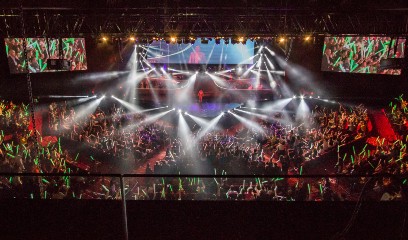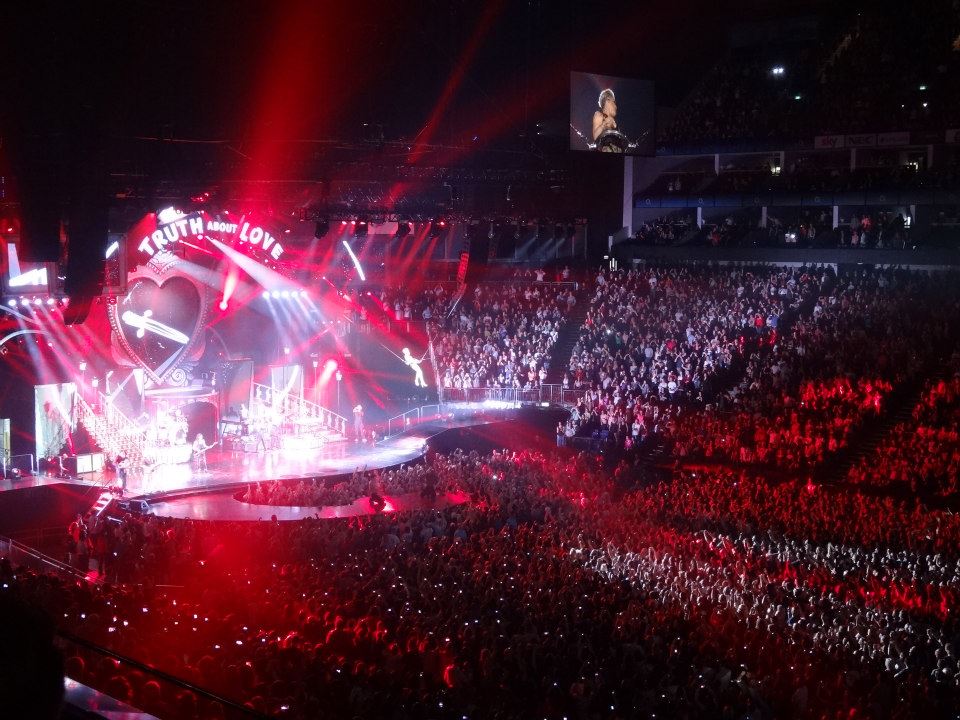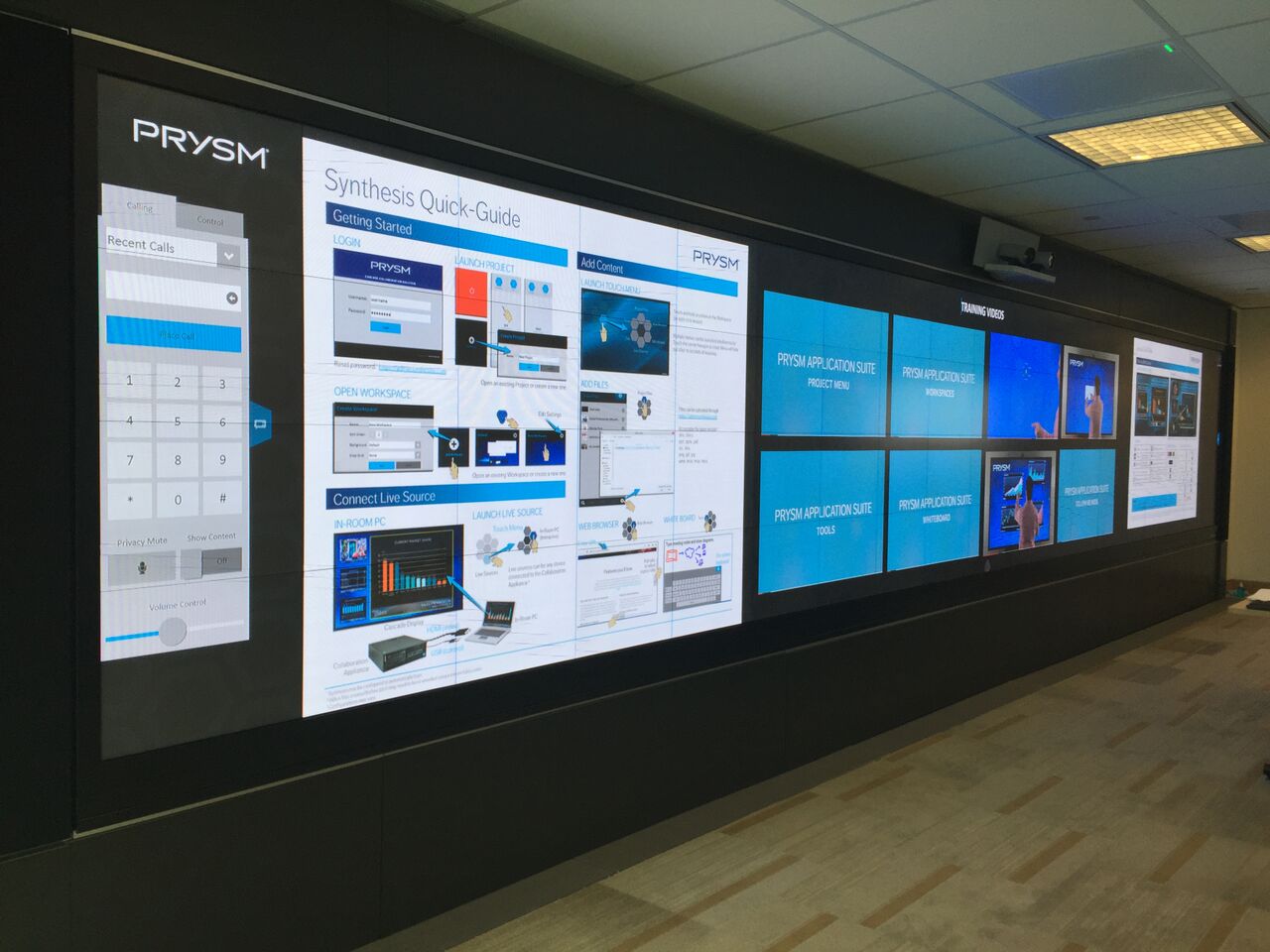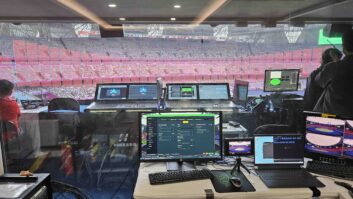
Craig Janssen MD of AV design specialists Idibri and former director of AVIXA, offers reveals the secrets on how venues can use technology to better engage with audiences
What does it take to engage you when you are part of the crowd at an event? Giant video screens? The mobile app that gives access to food? The LED light show coordinated with the architectural design?
Venue owners and architects are spending thousands of hours in meetings trying to crack the code on increasing engagement. And — as you may have noticed — arenas, stadia, and entertainment venues are in a technology arms race to get there first.
They key to which technology will engage you — both now and in the future — has nothing to do with technology and everything to do with the way you interact with it
Scoreboards are at record sizes. LED display technology is integrated into the architectural design in innovative ways. Mobile apps for events are ubiquitous.
Every decision that owners make about technology investment involves big money — which means there is intense pressure to get it right.

Want in on an insider secret?
They key to which technology will engage you — both now and in the future — has nothing to do with technology and everything to do with the way you interact with it.
It isn’t about how big the screen is. It is what that tech prompts you to do, and how it makes you feel. The odd thing is that how you respond is changing, and the difference lies in the technology you were raised with.
Broadcast audiences vs. digital audiences
Broadcast media travels one-way — from the camera and the microphone outward. When it first came on the scene, it was magic to audiences. Before, the only visual media was print. The sound was the radio. When audiences started to receive moving pictures with dialogue in their home, it changed things.
Rex Miller, in his book, The Millennium Matrix, makes the point that when the way we communicate changes, the way we think changes, and then culture changes.
There are cultural aspects to broadcast that go largely unnoticed by those of us who were raised with it. For example, it is linear — like a script. Scale matters (think ratings). Broadcast is produced at a certain level of quality. There is a producer and a director. And — most importantly — the audience watches what others produce. It is a passive medium for the viewer.
Nothing you do in your living room will affect the broadcast. (Except maybe have a Nielsen box and decide not watch, which will get a show cancelled.)
The challenge is that the emerging culture is digital. The more we engage with current technology, the less we are content to be passive audiences
Digital media — on the other hand — is non-linear. It hyperlinks. Speed matters more than quality (think bandwidth). You can access what you want anytime and anywhere. You have the power to customize, comment, hack and modify.
Everything you do affects digital content. You can interact with it. The bidirectional nature means that every view is counted.
Today’s large-scale events evolved in a broadcast world. To people raised on broadcast technology, bigger is better. You will leave the big screen in your house to see the giant one at a stadium.
The challenge is that the emerging culture is digital. The more we engage with current technology, the less we are content to be passive audiences. We want to be able to affect what is happening. We don’t care how big a screen is. We care that we can choose what we see. We care that it responds to us.
This is a massive culture shift, and for those who don’t notice it, the conversations are going to focus on the symptoms of non-engagement rather than proactive design that gives power to the audience to impact their own experience.
Here is what we have now, and where things are going…

1.0 Presentation technology
With presentation technology, you lean back. Think about sitting in a home media room kicked back in a recliner as a large screen HD television delivers your favorite entertainment and surround sound makes you feel truly immersed. It is broadcast heaven. There is nothing for you to do except enjoy.
Venues have had this type of technology for a long time. It’s the big screen. The audio system with amazing coverage.
And while this makes the event enjoyable, it doesn’t necessarily create engagement — especially as the digital world changes what we expect to be able to do with technology.
The strategy to date has been to take presentation technology and just make it bigger. Larger screens. Louder subbases. But at the end of the day, it’s just more of the same. One-way technology that only allows you to watch.
2.0 Responsive technology
With responsive technology, you lean in. Communication is multi-directional. Think about participating in an event by sharing with your friends via social media. You snap a picture, hashtag it, and post to Instagram. It might show up on the big screen. And when it does, you just affected the content in the venue. You order food with your mobile app. It’s a dialogue of sorts. You put something out there. The venue responds.
Theoretically, you could have 80,000 angles of a single play for replay
This is relatively new for venues and what is possible is only just now being explored.
For example, it is possible for a beacon to track your position in a venue, then as you near a team store let you know it’s been a year since you purchased a jersey. It can prompt a sale by offering a coupon for this year’s design.
There is research into allowing fans to capture live content via iPhone that would feed directly into a stadium instant replay system. Theoretically, you could have 80,000 angles of a single play for replay.
This new exploration with technology is creating deeper engagement because it is no longer a monologue. Individuals can interact with the venue and with each other. It connects people more deeply to the experience.
But you know what you can’t do with 2.0 technology? You can’t yet make it personal to you.
3.0 User-defined experience
If presentation technology requires you to lean back, and responsive technology allows you to lean in, the third level — a user-defined experience — invites you to dance with it.
What is possible when you can fully interact with an event or a venue? What happens if when you give feedback, the environment itself responds?
This is where the technology is going.
We’ve already seen a bit of this with responsive LED where your movements affect what happens on a screen. It also happens in EDM clubs with biometric bracelets when the DJ can measure the mood of the crowd based on the color of the wristbands and mix to affect the mood which creates this feedback loop between the dancers and the DJ allowing both to create the experience in real-time.
Augmented reality will invite participants to engage the environment in ways not possible before. Predictive technologies will allow environments to respond to your preferences.
3.0 technology will give you the power to customise while still being part of a group. Ultimately, it will allow groups to work together to create something collaborative in real-time.
What this means for venues…
Those of us raised in a broadcast world understand passive consumption of media. We hung out on our living room rugs on Saturday mornings and watched cartoons while eating cereal. But the longer we hang out in the digital world, the less satisfying passive consumption becomes.
This isn’t just a generational thing. This is for everyone who is using the technology.
As technology continues to evolve, we lose separation between what is media and what is brick and mortar. For venue owners and designers, this makes technology and media as much of the conversation as parking lots and concourses.
This is for sure: where the media goes, the desire for a user-defined experience will eventually follow.
And we — as designers — are going to have to figure out how to deliver it.
About the author…
Craig Janssen creates engagement in venues where people gather. Whether auditoria, arena or stadia, Craig’s expertise is at the intersection of venue design, acoustics and technology.
For over 25 years, Craig has worked shoulder-to-shoulder with venue owners and architects to spark connection within large groups of people. Craig serves as the Managing Director for Idibri—a team of technology designers, theatre consultants and acousticians. He has led over 1,000 venue projects in 12 countries.
You can find out more about Craig Janssen and read more of his articles here: https://medium.com/@craigjanssen







